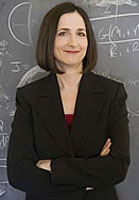

| Visitors Now: | |
| Total Visits: | |
| Total Stories: |
MIT scientist encourages a broader search for extraterrestrial life
openminds.tv
Image credit: PHL @ UPR Arecibo, ESA/Hubble, NASA
Astrobiologists typically target Earth-like planets in the search for extraterrestrial life. But one scientist is encouraging a broader search.

Professor Sara Seager. (Credit: MIT)
MIT astrophysicist Sara Seager believes the narrow search by researchers will bypass many potentially habitable worlds. Space.com explains Seager’s point that, “While it may seem natural to zero in on ‘alien Earths,’ such a narrow focus would exclude many potentially life-supporting exoplanets, whose diversity continues to astound astronomers.” Most of the current efforts looking for alien life seek out Earth-like planets because those worlds are more likely to support life as we know it. But as Seager explains to Space.com, “The number of planets that we’re going to be able to see in our lifetime — and look at their atmospheres for signs of life — is so small that we’re forced to be open-minded.”

Cover of the special Exoplanets issue of Science. (Credit: Science)
Seager believes that a more open-minded approach, paired with a better understanding of exoplanet habitability is essential to the search for extraterrestrial life. Studying atmospheres of potentially habitable worlds is crucial in the effort to gain a better understanding of exoplanets. And fortunately, NASA is launching a new tool designed to do just that. The James Webb Space Telescope is launching in 2018, and it will be able to analyze the atmospheres of exoplanets and search for signs of life.
Seager’s ideas about exoplanet habitability were just published in an article in a special exoplanet issue of the journal Science. And her hope is that this article “gets people to realize that so many types of worlds could be habitable, and that our chance of finding one is higher when we accept that.”
2013-05-02 17:47:42
Source: http://www.openminds.tv/mit-scientist-encourages-a-broader-search-for-extraterrestrial-life-999/
Source:



